Fat was not invented by Ukrainians: a brief history of a popular product among the Slavs
Categories: Food and Drinks | World
By Pictolic https://pictolic.com/article/fat-was-not-invented-by-ukrainians-a-brief-history-of-a-popular-product-among-the-slavs.htmlSalo, salted or flavored with salt and pepper, is considered a symbol of Ukrainian national cuisine. But eating lard was not invented in Ukraine at all. This product had many fans in Europe thousands of years ago and even then it was highly appreciated for its nutritional value and unusual taste. How did lard turn out to be in Russia and why did it become a truly cult dish with us?

Scientists believe that the word "fat" is Proto-Slavic and comes from the word "sadlo", which means" sit","sit down". The fat actually settles on top of the meat, forming a separate layer. This word has been preserved in some Slavic languages. For example, in Slovak "sadlo" still means lard.

The first mention of fat is found in ancient documents. According to ancient historians, it was this product that the workers of the Roman quarries ate. "Lardo" – a special kind of salted lard, was an excellent product for people who work hard and hard. Just a few pieces of fat, due to the high calorie content, could relieve hunger for a long time and provide the body with energy.
In addition, the ancient Roman fat had an important property for workers – it spoiled in the heat much slower than meat. To give "lardo" its signature taste, it was salted in a special way. For this purpose, only sea salt and garlic were used, and the latter was added using a special technology.
"Lardo" was prepared in troughs made of Carrara marble, which were rubbed with garlic, before placing lard sprinkled with sea salt there. A mixture of spices was added to the container and then the product was left for six months in a wine cellar or cave to "ripen".
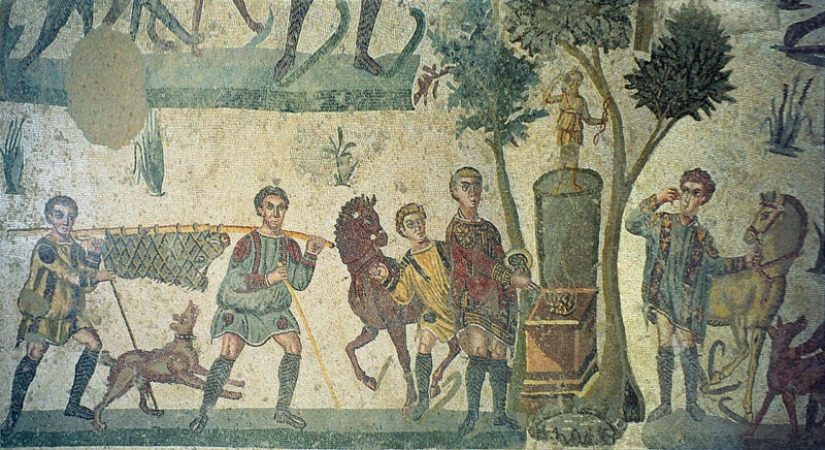
After a while, "lardo" from the food of workers passed into the category of dishes of national cuisine and it was even exported to other countries for export. Emperor Justinian, knowing about the nutritional value of this dish, made it an obligatory part of the diet of legionaries. For several centuries, the Roman army was the largest consumer of salted lard with spices in Europe, and maybe in the world.
In the Middle Ages, lard was especially loved by monks. According to legend, Saint Benedict, the founder of the Benedictine monastic order, was the first to introduce the custom of using this product. Lard was equated in its usefulness to pork meat, with which it was inextricably linked "just as wine is connected with a vine". At the same time, lard was cheaper than pork itself.
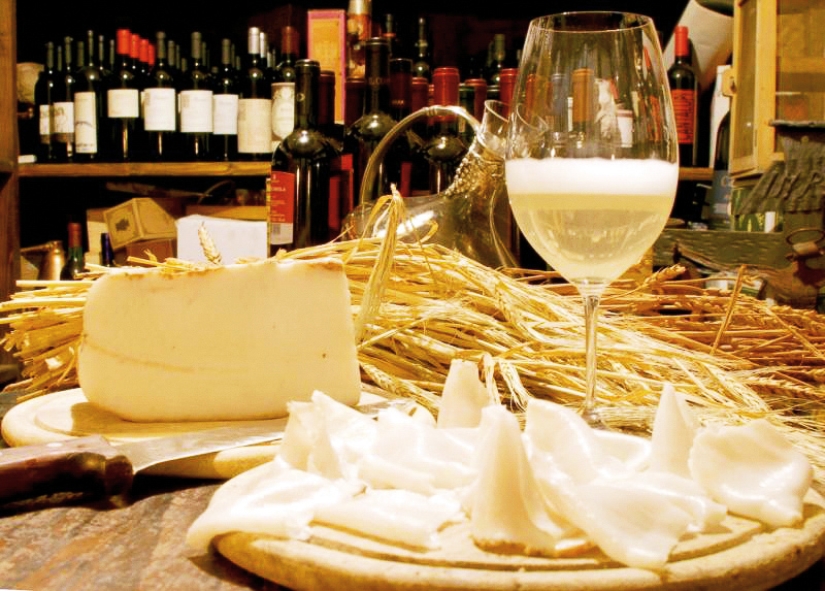
The monastery kitchens used lard very widely. In medieval books there are often such interesting stories about the modest food of the holy fathers:
Lard was also in demand among the laity. There is reason to believe that Christopher Columbus, in order to prevent a hunger riot on his ships during the first expedition, distributed salted lard to the sailors, intended for sale and exchange with the inhabitants of distant countries. Compared to the rotten cheap corned beef, it was the real food of the gods!
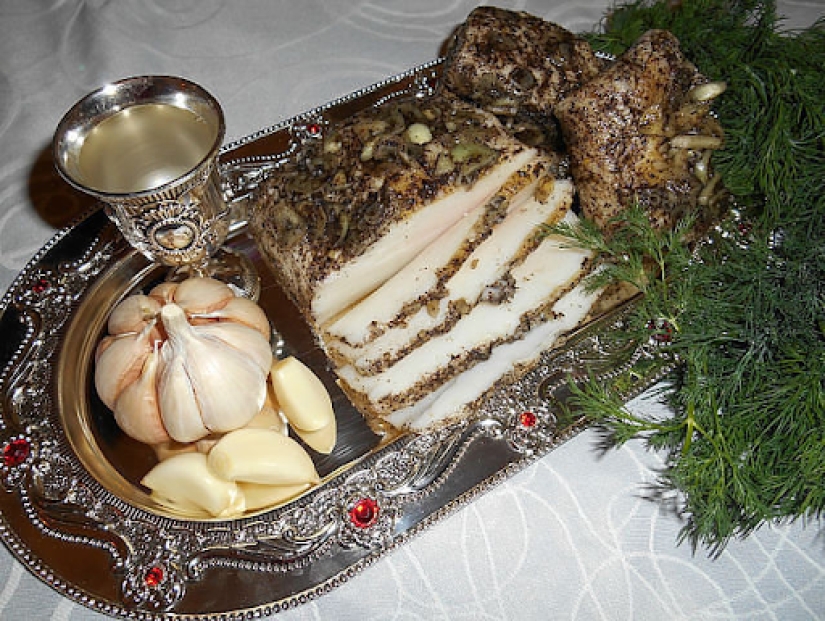
You might think that in Ukraine they always ate lard, but this is not so. Interest in this product appeared on the banks of the Dnieper much later than in other European countries. Ukrainians began to actively eat lard only in the 17th century, at the height of the Turkish and Tatar raids.
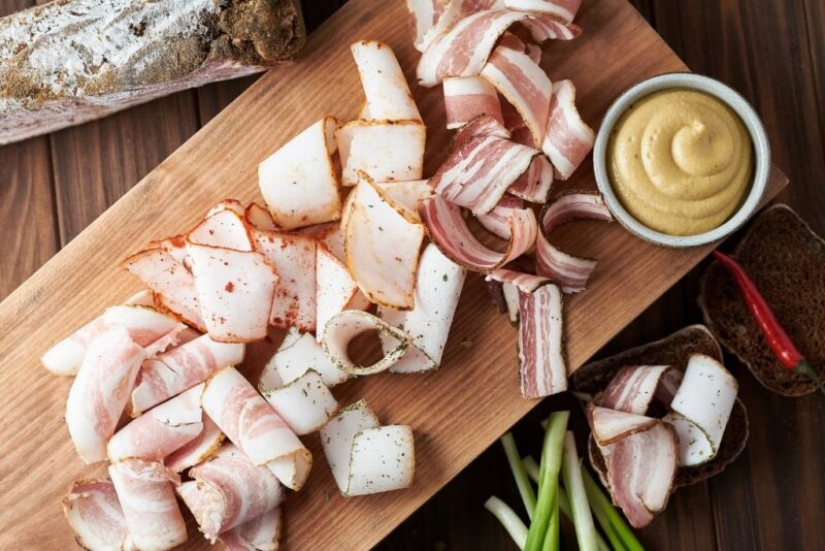
So the cult of lard and pork in general was forced. Muslims, who always stole cattle with them, were indifferent to pigs, which their faith forbade them to use in any form. At that time, on the territory of Ukraine, people began to use lard with everything possible – with borscht and dumplings, in pies and sausages. So the locals reliably protected their supplies from Tatar greed. When the invasions were left behind, lard remained a favorite dish.
Nowadays, lard is strongly associated with Ukraine. Traditional Ukrainian lard with salt, pepper and garlic is considered a classic, but there are many other recipes, both complex and the simplest. Lard can be added anywhere, especially if it is overcooked in golden fragrant pork rinds.
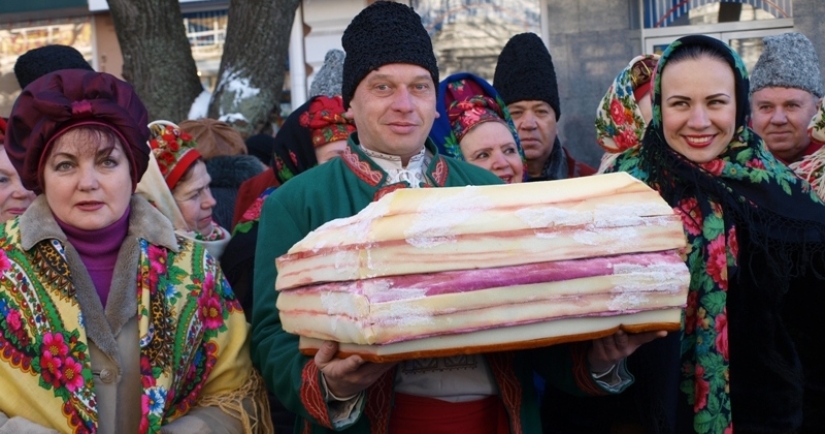
Lard has become a real object of worship and has fallen not only into the culinary tradition of the Ukrainian people, but also into folklore. Songs and jokes about lard have become an integral part of oral folk art, and in 2011 the Lard Museum was even opened in Lviv, where the figures of Marilyn Monroe, Taras Bulba, Nikolai Gogol from lard, as well as paintings with the legendary dish are presented. Moreover, recently an artificial fat was created in one of the country's research institutes!
Keywords: World | Traditions | Monks | Cooking | Ukraine | Dish | Food and drinks | Pork | Tatars | Romans
Post News ArticleRecent articles

Gerard Uferas is one of the most renowned and vibrant contemporary French photographers. His talent is multifaceted, but Uferas is ...

In 1969, a healthy food restaurant opened on the Sunset Strip in Los Angeles-one of the first in the country, and possibly in the ...
Related articles

In 1969, a healthy food restaurant opened on the Sunset Strip in Los Angeles-one of the first in the country, and possibly in the ...

In the summer, some of our compatriots prefer to fly away from their hometowns. Even those who are afraid to fly. If you are one of ...

"Tell me what country you are from, but don't name it" – this is a game that the inhabitants of social networks like to play. ...

Colin and Kristin Poole are an amazing creative family. Colin is a world-renowned artist, and his wife Kristin is a wonderful ...